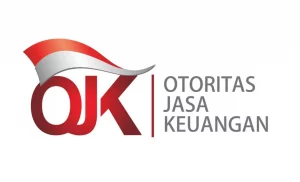OJK: Stable Financial Services Sector Recorded at End of Year

The Financial Services Authority (OJK) has recorded that the stability of the financial services sector until the end of 2021 is maintained.
This went hand in hand with improved performance of the banking intermediation function and fundraising in the capital market. Furthermore, the well-controlled COVID-19 pandemic has also become a factor that makes mobility and economic activity increase leading to stability.
“Fundraising in the capital market as of 24 December was recorded at Rp358.4 trillion, the highest value in history with 55 new issuers. The majority of this fundraising is used as working capital,” Deputy Commissioner for Public Relations and Logistics of the OJK Anto Prabowo said in his written press statement, Thursday (12/30).
Meanwhile, the banking intermediation function in November 2021 grew by 4.82 percent year-on-year (yoy) or 4.17 percent year-to-date (ytd) driven by an increase in micro, small and medium enterprises (MSMEs) and retail loans.
“Indicators of the domestic economy also show continuous improvement. Real sector indicators such as the Manufacturing Purchasing Managers’ Index (PMI), the Consumer Confidence Index (CCI), Vehicle Sales, and job vacancies continue to improve,” he said.
In addition, the external sector also continued to improve, as indicated by the trade balance surplus and an increase in foreign exchange reserves.
“This is expected to provide a buffer to dampen the impact of the normalization of monetary policy by major central banks, especially the Fed,” he added.
The Indonesian stock market still remains robust. As of 24 December 2021, the IDX Composite (IHSG) recorded an increase of 0.4 percent month-to-date (mtd) to the level of 6,563 with non-residents recording an inflow of Rp0.94 trillion. Meanwhile, in the SBN (government securities) market, non-residents recorded an outflow of Rp24.99 trillion, pushing the average yield on SBN to increase by 8 basis points (bps) mtd across all tenors.
Also, in the banking industry, the majority of the main credit sectors recorded an increase, especially in the processing and household sectors at Rp24.9 trillion and Rp9.1 trillion, respectively. Meanwhile, Third-Party Funds (DPK) recorded growth of 10.48 percent yoy or 9.98 percent ytd.
In the Non-Bank Financial Industry sector, the insurance sector managed to collect premiums of Rp26.1 trillion in November 2021, namely life insurance premiums of Rp16.3 trillion as well as general insurance and reinsurance of Rp9.8 trillion.
“Fintech peer-to-peer lending services in November 2021 continued to record growth of 106.6 percent yoy or an increase of Rp1.2 trillion (ytd Rp13.8 trillion) in outstanding financing. Meanwhile, receivables from finance companies were relatively stable at the level of Rp363 trillion,” he said.
It is also stated that the risk profile of financial services institutions in November 2021 was still maintained with the net Non-Performing Loan (NPL) ratio recorded dropping to 0.98 percent (gross NPL 3.19 percent) and the Non-Performing Financing (NPF) ratio of financing companies recorded at 3.92 percent.
In addition, COVID-19 credit restructuring continued the downward trend in November 2021 with restructuring loans recorded at Rp693.62 trillion.
“The number of debtors for the restructuring has also decreased from 4.4 to 4.2 million debtors,” he said.
The Net Open Position (NOP) in November 2021 was recorded at 1.60 percent or far below the threshold of 20 percent. In addition, the liquidity of the banking industry in November 2021 was still at an adequate level. This can be seen from the ratio of Liquid Assets/Non-Core Deposits and Liquid Assets/DPKs of 154.90 percent and 34.24 percent, respectively, above the regulatory thresholds at the levels of 50 percent and 10 percent, respectively.
In terms of capital, financial services institutions also recorded an increasingly improved capital. The banking industry recorded an increase in capital adequacy ratio (CAR) to 25.62 percent or well above the threshold.
“The risk-based capital (RBC) of the life insurance and general insurance industries was recorded at 589.5 percent and 322.9 percent, respectively, far above the threshold of 120 percent. Likewise, the gearing ratio of finance companies was recorded at 1.91 times or far below the maximum limit of 10 times,” he added.
The OJK also consistently conducts assessments on the economy and the financial services sector together with the Government and other relevant authorities and stakeholders in order to maintain the financial system stability and encourage the acceleration of national economic recovery.
“To encourage national economic recovery, the OJK continues to create synergy and coordinate with various ministries/institutions, regional governments, and the financial services industry by holding various activities to motivate MSMEs, developing cluster-based KUR (smallholder business credit) and Micro Waqf Banks, as well as organizing mass vaccinations,” he remarked. (PR of OJK/UN) (FI/MUR)








